QNAP TS-451+ SOHO NAS Review
by Ganesh T S on October 29, 2015 8:00 AM ESTMulti-Client CIFS Performance for Consumer Workloads
The workloads experienced by a NAS unit in a typical home consumer setting have changed quite a bit over the last few years. Multiple mobile devices in a typical household raise the possibility that a NAS could be subject to the streaming out of multiple video files simultaneously. The popularity of IP cameras also make it necessary for NAS units to be able to record multiple video streams at the same time.
In our previous NAS reviews, we evaluated multi-client scenarios using synthetic workload traces and IOMeter. While there is nothing wrong in presenting numbers from such benchmarks, the reader is often left confused as to what those numbers might mean for his particular use-cases. Intel's NASPT benchmarking program gives us a good idea of the performance of the NAS unit when accessed by a single client. We took the source code of Intel's NASPT along with the supplied application traces and tweaked them to be able to run from more than one Windows client simultaneously in a co-ordinated manner. The graphs below present the results from tracking various metrics during the course of the benchmark runs. It must be noted that the average service times refer to what is obtained for all the traces when some of the data has already been cached in the client's memory. Unfortunately, NASPT doesn't provide any sort of guideline on what the optimal bandwidth and service times are for a good user experience.
Content Creation
The Content Creation workload seems to get acceptable performance for up to 6 clients. Beyond that, we have a noticeable drop in the per-client bandwidth numbers. The detailed table with a breakdown of all the throughput numbers as well as the service times is available here
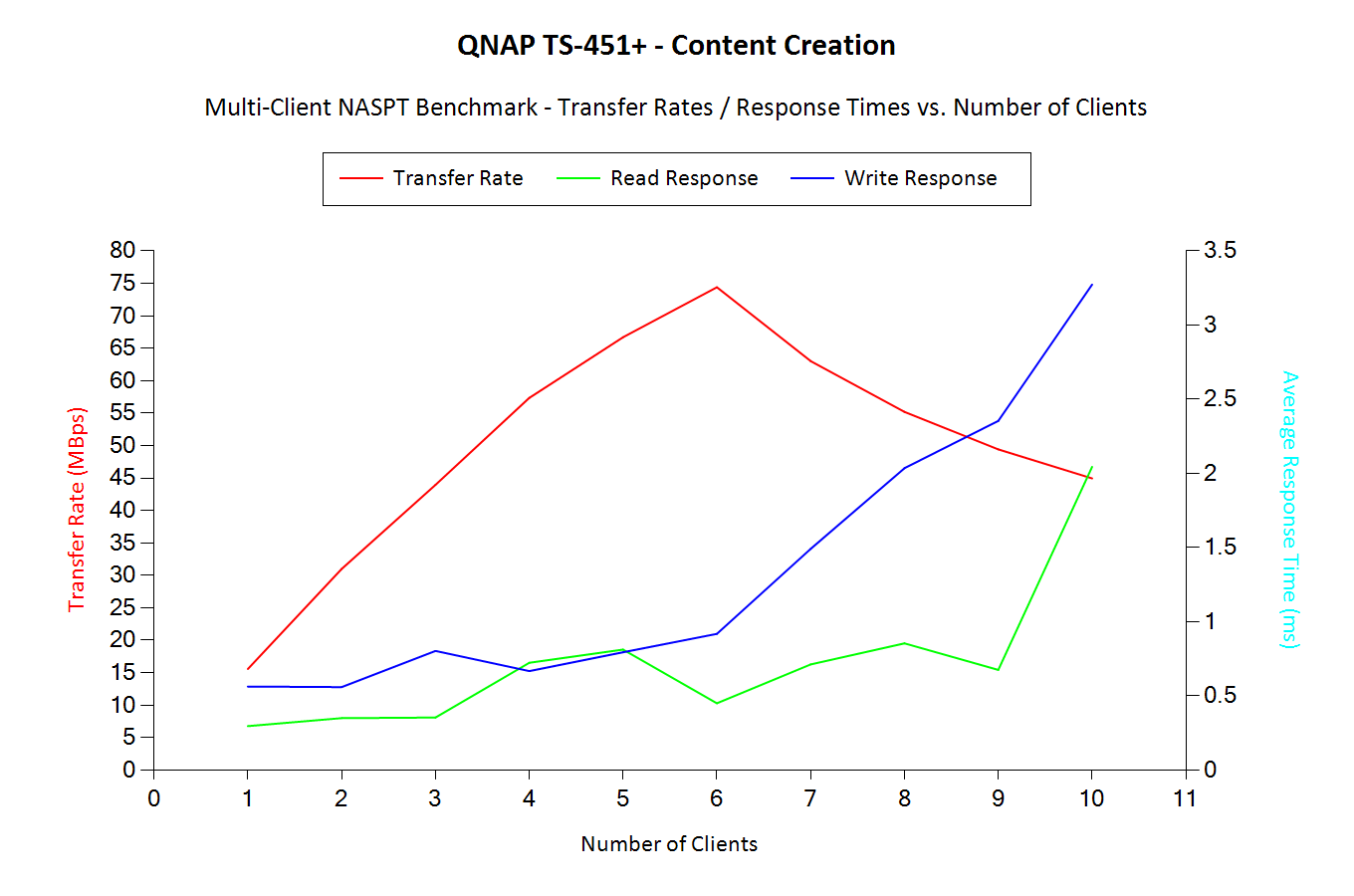
Folder Copy from NAS
The Folder Copy from NAS workload seems to get acceptable performance for up to 10 clients (maximum that we tested). The detailed table with a breakdown of all the throughput numbers as well as the service times is available here
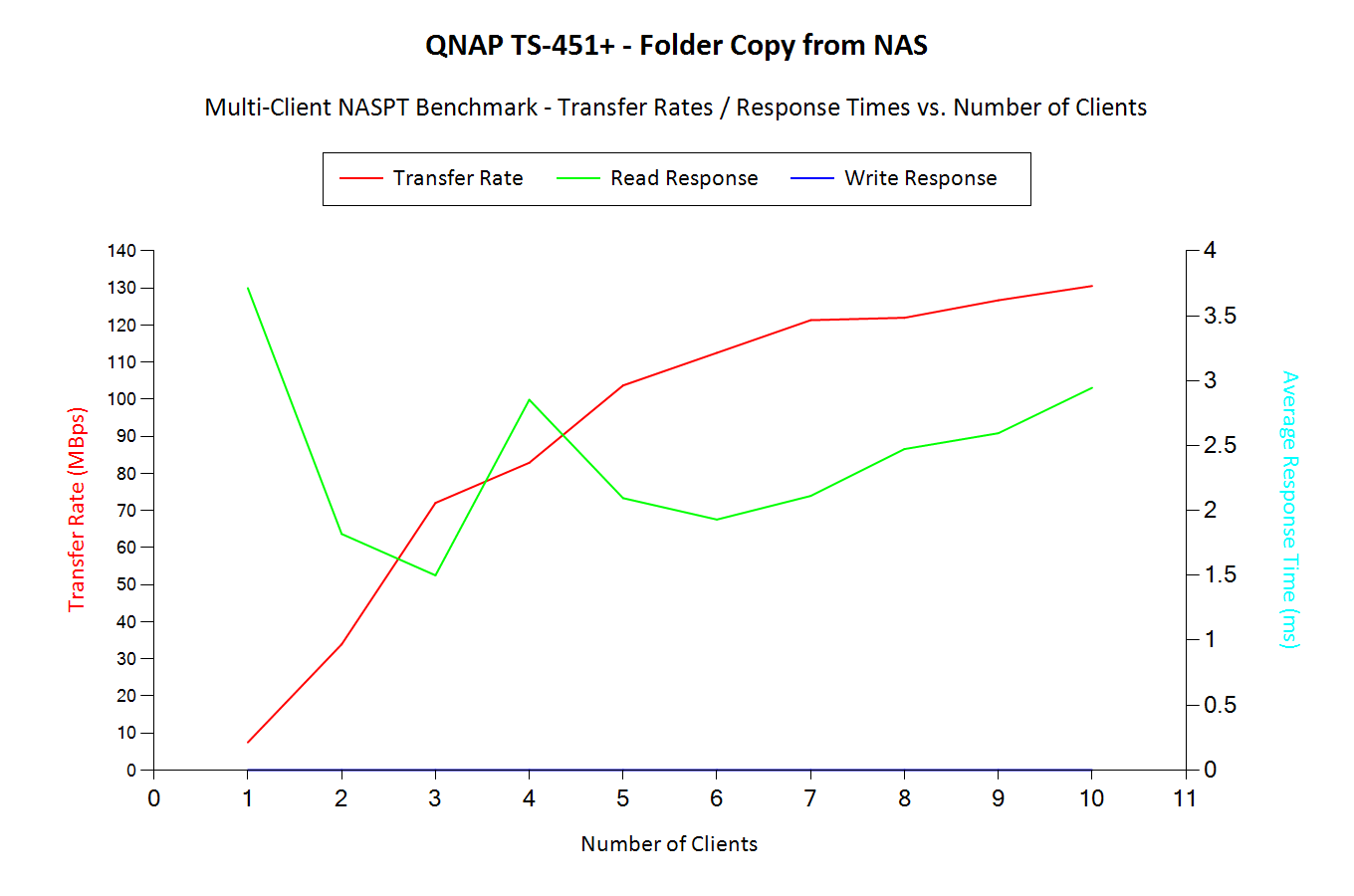
Folder Copy to NAS
The Folder Copy to NAS workload seems to get acceptable performance for up to 6 clients. Beyond that, we have a saturation of the total throughput despite being on a 802.3ad link. The detailed table with a breakdown of all the throughput numbers as well as the service times is available here
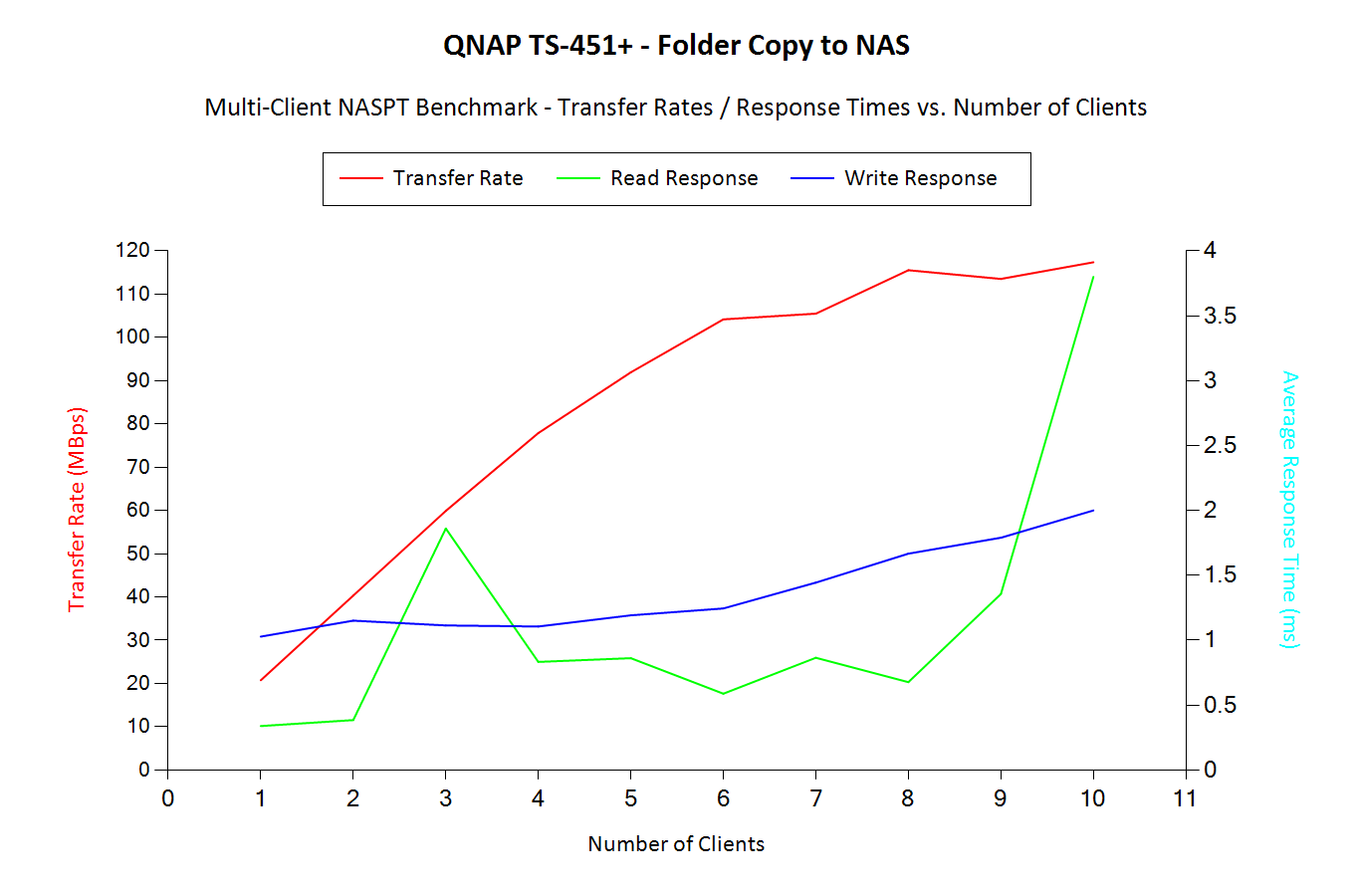
File Copy from NAS
The File Copy from NAS workload seems to get acceptable performance for up to 4 clients. Beyond that, the total available bandwidth plateaus well below the link-aggregation limit, indicating an IOPS issue. The detailed table with a breakdown of all the throughput numbers as well as the service times is available here
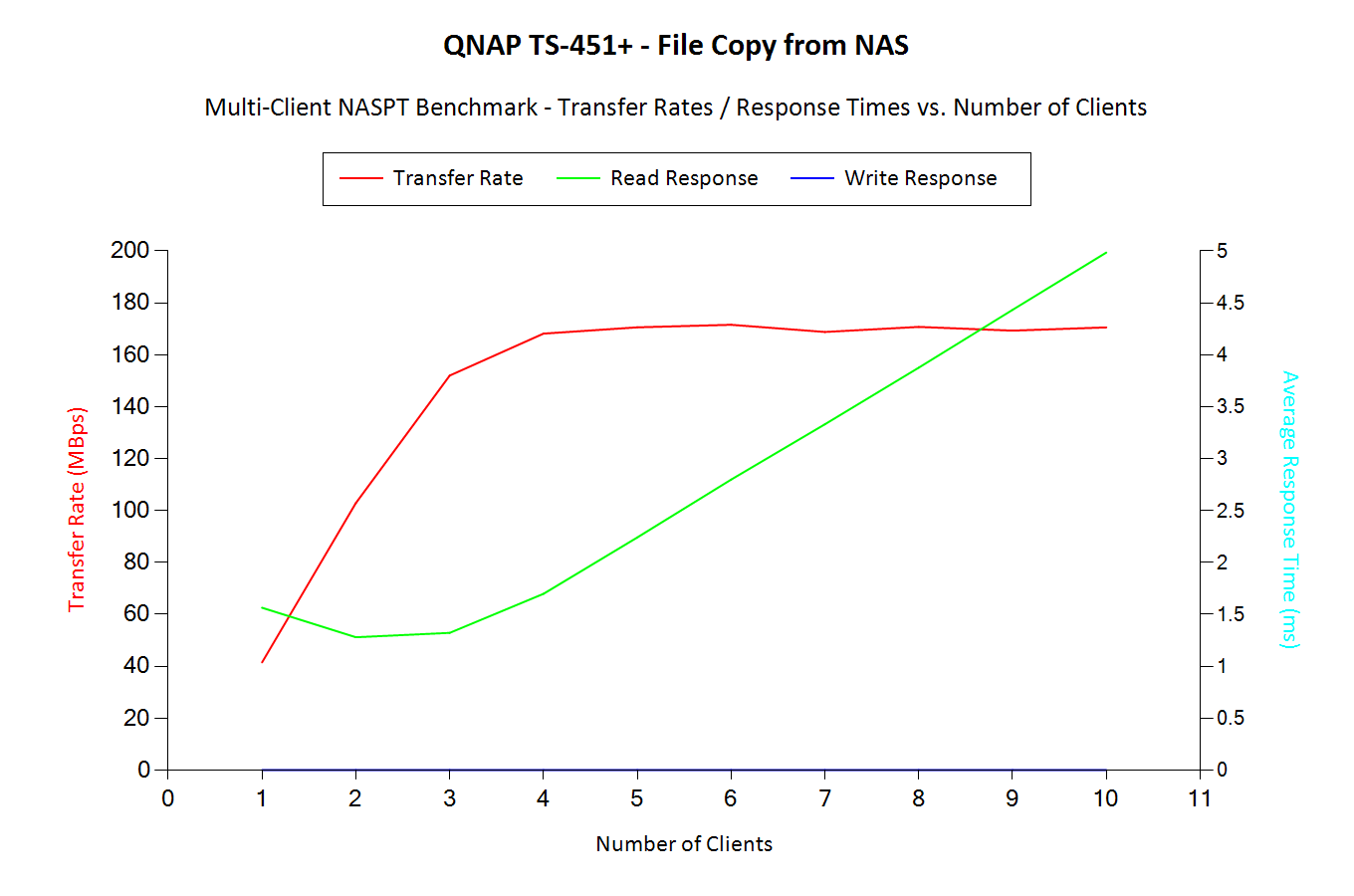
File Copy to NAS
The File Copy to NAS workload seems to get acceptable performance for up to 6 clients. Beyond that, we have a sudden spike in the average response time. The detailed table with a breakdown of all the throughput numbers as well as the service times is available here
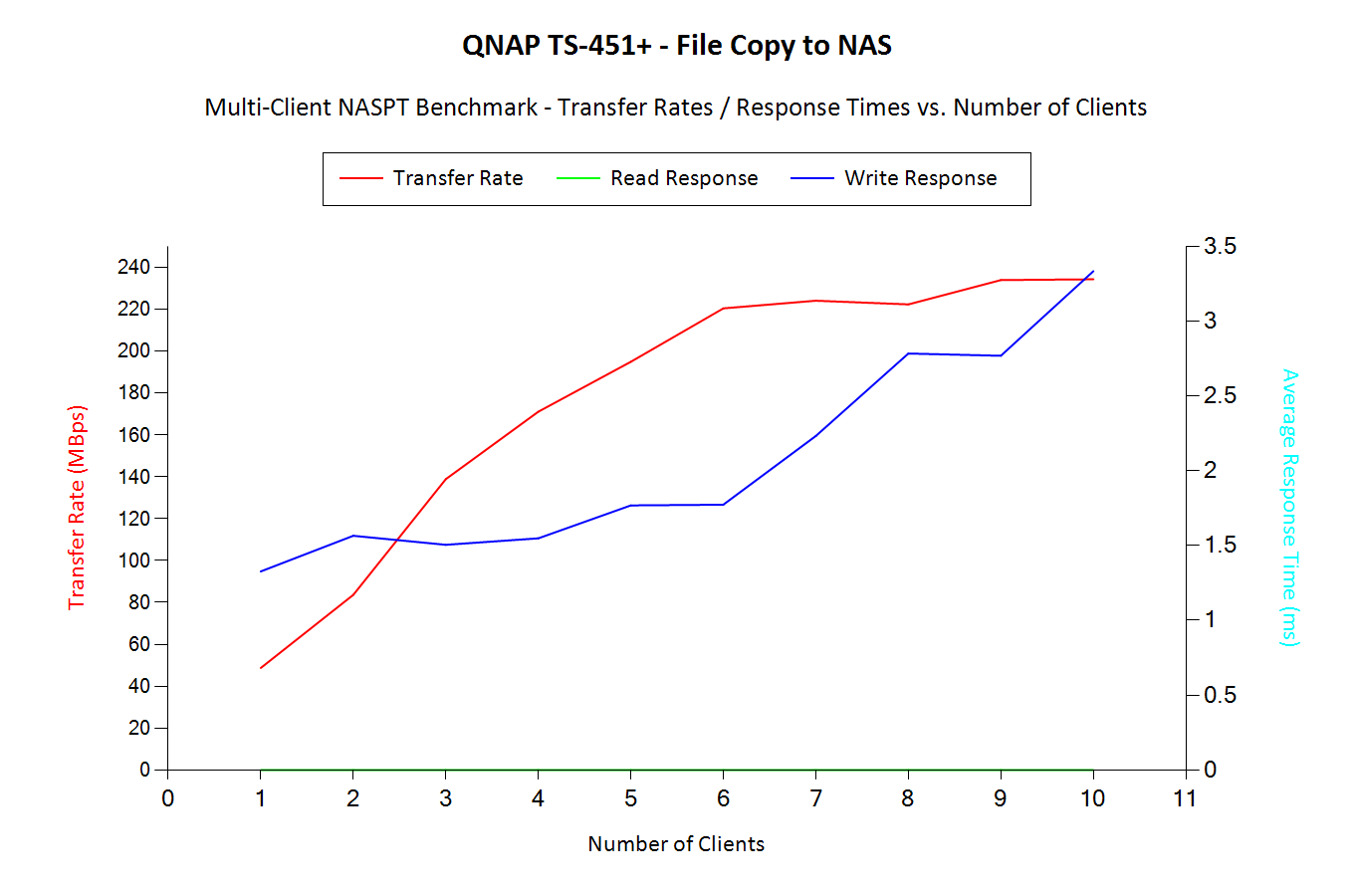
HD Video (1x) Playback
The HD Video (1x) Playback workload seems to get acceptable performance for up to 3 clients. Beyond that, we have a plateau slightly below the link-aggregation limit. The detailed table with a breakdown of all the throughput numbers as well as the service times is available here
-Playback.png)
HD Video(1x) Playback and Record
The HD Video(1x) Playback and Record workload seems to get acceptable performance for up to 4 clients. Beyond that, we have a plateauing of the total bandwidth number. Thanks to the full-duplex nature of the NICs, we are able to cross the 250 MBps mark (thanks to the simultaneous reads and writes through the LAN). The detailed table with a breakdown of all the throughput numbers as well as the service times is available here
-Playback-and-Record.png)
HD Video (1x) Record
The HD Video (1x) Record workload seems to get acceptable performance for up to 4 clients. Beyond that, we have a sudden spike in the average response time. The detailed table with a breakdown of all the throughput numbers as well as the service times is available here
-Record.png)
HD Video (2x) Playback
The HD Video (2x) Playback workload seems to get acceptable performance for up to 3 clients. Beyond that, the total available bandwidth plateaus. The detailed table with a breakdown of all the throughput numbers as well as the service times is available here
-Playback.png)
HD Video (4x) Playback
The HD Video (4x) Playback workload seems to get acceptable performance for up to 3 clients. Beyond that, the total available bandwidth plateaus. The detailed table with a breakdown of all the throughput numbers as well as the service times is available here
-Playback.png)
Office Productivity
The Office Productivity workload seems to get acceptable performance for up to 10 clients (maximum that we tested). The detailed table with a breakdown of all the throughput numbers as well as the service times is available here
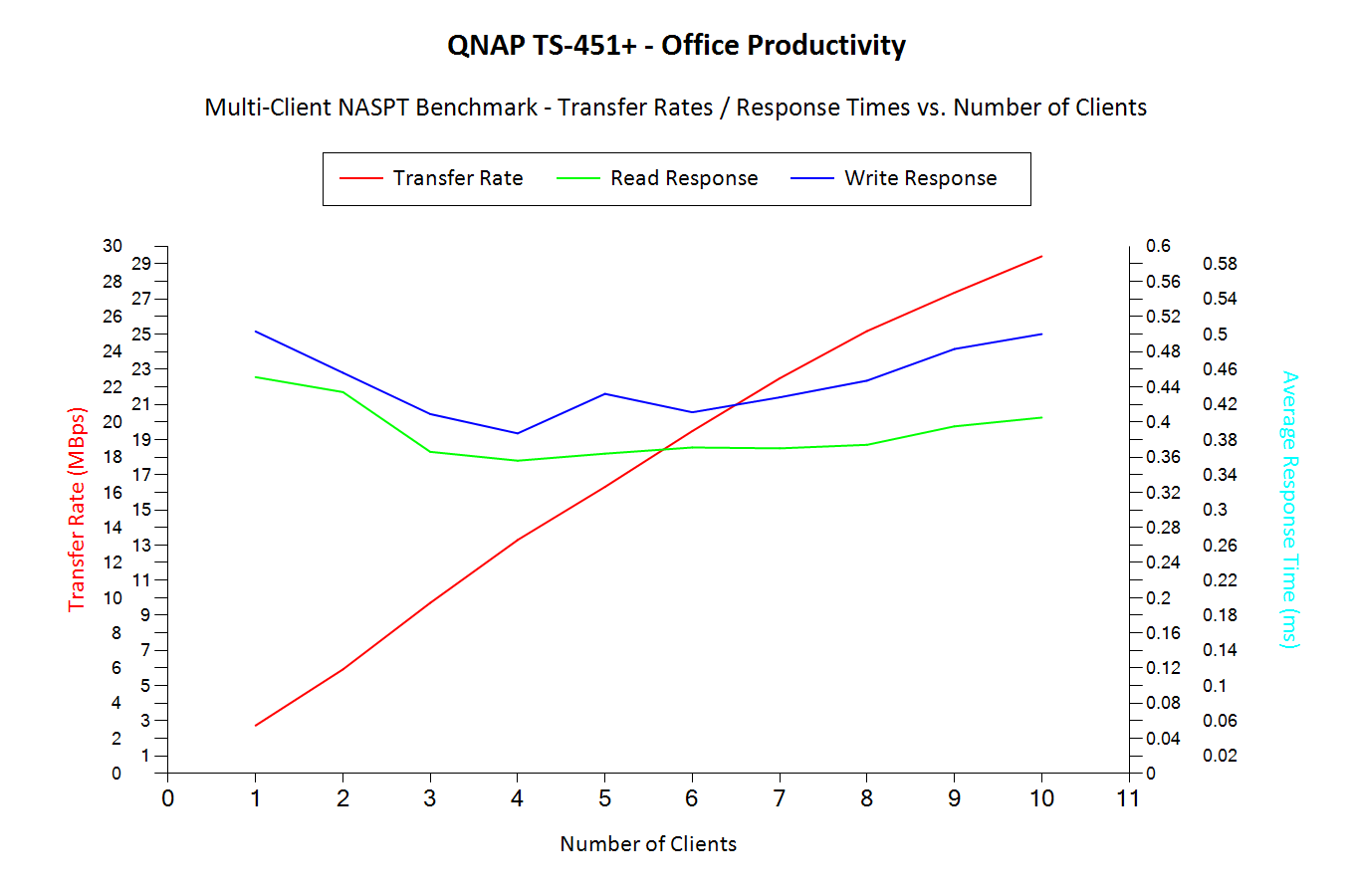
Photo Album
The Photo Album workload also seems to get acceptable performance for up to 10 clients (maximum we tested). The detailed table with a breakdown of all the throughput numbers as well as the service times is available here
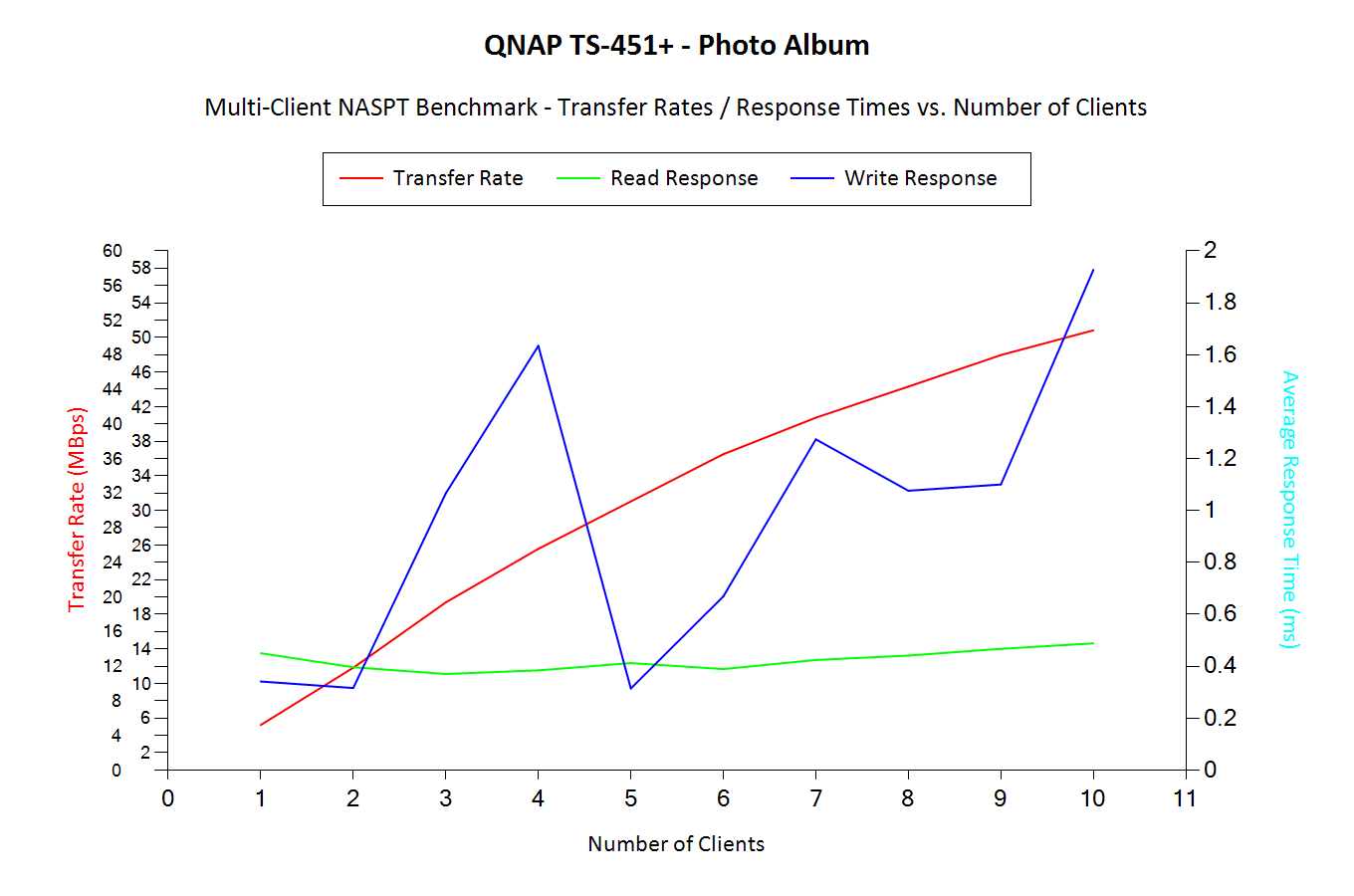
The detailed logs from the processing of our benchmarks - inclusive of metrics such as the file open times for each workload on each of the clients - can be found here










34 Comments
View All Comments
mwituni - Thursday, November 19, 2015 - link
As an existing QNAP user, I don't know how any QNAP NAS's can be seriously considered for any awards, nor why they do so well on reviews.They entice buyers with fancy options, but are not interested in developing applications users need.
SVN (Subversion Source Control) is the most popular and source control software in use, yet QNAP have been promising a proper SVN-server application since 2009, and still not delivered! How can users take them seriously - they're obviously not interested in developing applications the community needs, only the minimum needed to trick buyers into purchasing and evaluators to award prizes. They claim you can install SVN by an outdated method - which is very risky and outdated by a few years, and in my experience does not work at all.
They have a GIT client, so can claim they "have" source control applications. But no SVN support.
Their marketing department needs to kick the development team into gear.
krazyderek - Sunday, January 10, 2016 - link
maybe you should should join everyone else and switch to GIT ;) https://git-scm.com/book/en/v1/Git-and-Other-Syste...gnalley - Saturday, January 23, 2016 - link
Don't try to use this device as a standalone windows domain controller. The SAMBA and DHCP implementations are missing two CRITICAL components for it to work.Samba is missing the ability to do DNS Forwarders...and DHCP does not allow you to input the OPTIONS command. Both of these functions are critical to having a working solution. If you want a standalone MS Domain Controller that works. Look elsewhere.
StaksOnStaks - Wednesday, June 1, 2016 - link
I noticed the model tested was the 8GB. Any sense of how the performance would compare to the 2GB? For example, I noticed the Synology DS415+ was very close in the performance, but only has 2GB. Would the 2GB version of the QNAP TS-451+ perform as well compared to the Synology DS415+?